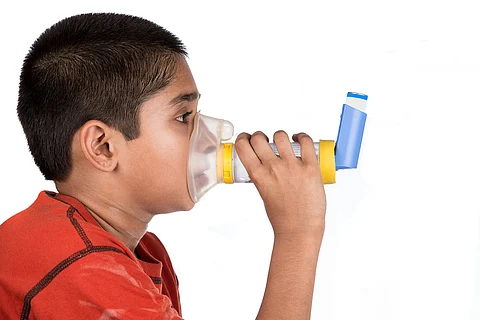

By Dr Aparna Reddy
Asthma is a sensitivity of the airways of the respiratory system (lungs) that can make it hard to breathe. The airways react to different triggers in the environment and become inflamed (swollen) and irritated.
During an asthma attack or flare-up, three things happen to the airways to restrict breathing:
Because children have narrower airways, the above factors can cause greater restriction to breathing in children than in adults.
Asthma symptoms often occur in response to a trigger. Common triggers include:
Diagnosis is based on the history of symptoms of cough, breathlessness, and wheezing, which occurs in relation to trigger factors like seasonal changes. It can be confirmed with lung function tests and allergy test. Your doctor will take down a detailed history, look for eczema, nasal polyps, and listen for wheezing, and decide about the evaluation of asthma.
The foremost step to take when diagnosed with asthma is to identify the triggers and avoid them. Inhalers are the first line of therapy. Contrary to general belief, they are not reserved for non-responsive asthma.
Inhalers deliver the drug to the site of the disease, thus the effect is instantaneous. Dose is negligible compared to a tablet. Inhalers deliver a very small amount of medicine and as it goes straight to the lungs, it works effectively. Also, the usage of inhaler reduces the side-effects. Inhalers should be used with spacer.
Inhalers are of two types:
Preventers – A preventer protects the child’s air tubes by making them less sensitive to asthma and the triggers. Take preventers daily.
Reliver – A reliver should be taken on a need basis, when there is flu/cough/wheezing.
Inhalers should be used through spacer in older children. Sometimes the doctor may ask to use the spacer with the mask. Some children with mild asthma do grow out of it. So regular follow-up visits are a must.
It is important for an asthmatic to identify the triggers. Use the preventer medication daily and ask your doctor to create an action plan to guide you on how to increase inhalers when a child is coughing/wheezing. Most children outgrow wheezing if it is well-treated and controlled.
Dr.APARNA REDDY
Pediatric Pulmonologist
MBBS, MD
Fellowship in Pediatric Pulmonology (NUH Singapore)
Rainbow Children's Hospital, Banjara Hills, Hyderabad
This article was published in association with Rainbow Children’s Hospital.